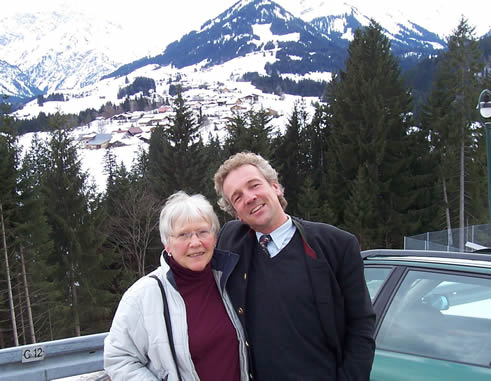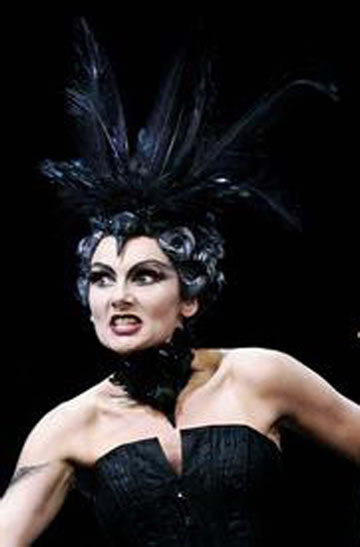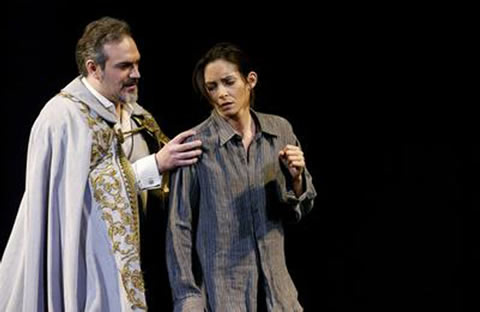An American in Vienna (and Beyond)
by Cecelia Porter
Every visit to Vienna brings deeper discoveries of the city’s beauty and esprit. Early this spring, I felt closer than ever to Vienna’s elusive essence. I was there for research in the Austrian National Library about two Austrian women composers, Frida Kern and Maria Bach, who were active in Vienna through World War Two.
But I found myself crowding my time with many more adventures than anticipated. In visits with Michael Bladerer, press officer and bassist of the Vienna Philharmonic, and Wolfgang Schaufler at the Austrian Music Information Center, I was drawn into conversations about Vienna’s musical life, past and present. I also enjoyed nine splendid musical performances and prowled through exhibits in numerous museums, many focused on Vienna’s Mozart Year.
A Viennese friend took me to the opening of the enlightening exhibit “Lorenzo Da Ponte—Aufbruch in die neue Welt” at the Jewish Museum. After lectures and a performance, Dr. Peter Marboe, Artistic Director of Vienna’s Mozart Year 2006, remarked to me: “This exhibit, a significant part of Vienna’s Mozart Year, helps explain the reality of life in Mozart’s times; and it is relevant for today’s issues in its approach to Mozart from various directions, for Vienna’s Mozart exhibits are designed to inform all generations and a wide spectrum of visitors.”
The Da Ponte exhibit began not with the birth in Venice of Mozart’s librettist, but with his residence in New York City, where Da Ponte spent the last 24 of his 89 years. The Jewish Museum also offered an intriguing in-depth display marking the 100th birthday of the Austrian émigré composer Erich Zeisl (I had recently conversed with his daughter, Barbara Zeisl-Schoenberg and her husband, Ronald - son of the renowned composer Arnold Schoenberg - in an Austrian Embassy symposium in Washington, D.C.).
My two excursions to the Albertiner Museum for the exhibit “Mozart-Experiment Aufklaerung” only touched its comprehensive coverage of Mozart. Then, behind the Stephansdom, I found the Mozart Haus, with its insightful glimpses into the composer’s domestic life. Of course, I was also lured into Doblinger’s, Vienna’s world-renowned music store, which I can never leave empty-handed. And a stroll down the ‘Ring’ drew me irresistibly into the Steinway Haus. After mentioning my own 1906 Steinway, I was immediately invited to try out all the showroom instruments. And I did.

Cecilia Porter and Thomas Gayda, Kleinwalsertal, March 2006. Photo: Cecilia Porter.
Nine musical performances in ten days left me exhilarated but with no time to indulge in a Wienerschnitzel. A Vienna Philharmonic Orchestra rehearsal conducted by Christian Thielemann in the Musikverein enchanted me with Stepan Turnovsky’s lovely romp through Mozart’s Bassoon Concerto, Thielemann’s riveting version of Schumann’s Third Symphony (the “Rheinisch”) and the moving Beethoven’s Fifth Symphony.

Mozart's Zauberfloete starring Edith Lienbacher
I tested my visitor stamina with four opera performances, including a premiere production of Mozart’s La Clemenza di Tito, marking Vienna’s ongoing Mozart celebration and the opening of the Theater an der Wien, the city’s new opera house. (This year’s seven Mozart productions were designed to “update” traditional opera productions). Conducted by Paolo Carignani, the theater’s Clemenza reflected contemporary life in its staging, costumes, and sets, including a revolving set, the cast leaping on and off while singing. And I was amused by a brief visual parody of Baroque opera-characters attired as ancient Romans - and a live Baroque cherub suspended from the ceiling. Kurt Streit (Titus) and Elina Garanca (Sextus) led a superb cast.

Mozart's La Clemenza di Tito starring Antigone Papoulkas and Birgit Steinberger
The next night, Peter Schneider conducted Mozart’s Don Giovanni at the Staatsoper, a performance emphasizing the opera’s restless foreboding laced with satiric buffoonery. Ferruccio Furlanetto (the Don) headed a strong cast. The following evening brought Stefan Soltesz leading the Staatsoper’s Aida, its monumental sets suggesting a regal ancient Egypt. Sylvie Valayre (Aida) and Johan Botha (Radames) sang with ardent fervor. On the fourth night, I attended the Volksoper’s refreshing Die Zauberfloete; well-behaved youngsters in the audience giggled at the opera’s farcical episodes.
During a long train trip west from Vienna to Hohenems, the landscape grew ever more dramatic as the Alps rose to lofty heights, snow melting into rushing waterfalls everywhere. (The Alps’ jagged peaks differ starkly from the smoothly undulating American Appalachians near my home). Deliciously, I stayed at a Konditorei in Hohenems, a picturesque little village near Bregenz and the Bodensee. There the wonderful four-concert Schubertiade included performances by L’Arpeggiata, an international Baroque and jazz ensemble (with the fine countertenor Philippe Jaroussky). The group embellished Italian Baroque works with ornate flights of lyrical fantasy. A poignant Liederabend by German tenor Christoph Strehl and pianist Helmut Deutsch focused on Schubert’s songs. And I was astounded by the artistry of the remarkable young pianist Martin Stadtfeld, who blazed through Bach’s pulsing “Goldberg Variations.”
Between concerts I drove through beautiful mountain scenery along winding roads edged by deep snow to visit an old friend, the Austrian musicologist Dr. Thomas Gayda, in the Voralberg’s Kleinwasertal, a beautifully remote Alpine valley with its own culture and dialect and accessible only by car, foot, or skis. Dr. Gayda has delved deeply into films and film music from the 1920s to the 1940s, as created by numerous Austrian and German composers and producers, many of them émigrés from Nazi Europe who settled in Hollywood. Gayda produces a popular annual outdoor film festival, the “Walser Filmgewitter” (this year on August 23-27 in the Walserhaus Hirschegg and the Kurpark Oberstdorf in the Kleinwalsertal).
To make my Vienna journey complete, I confess that more than once I enjoyed the best Cappuccino mit Schlagobers in the world and never turned down a glass of Gruener Veltliner.
Cecilia Hopkins Porter has been a classical music critic for the Washington Post for 22 years and has written articles for numerous publications. She has served on the music faculties of George Washington University and the University of Maryland. As a musicologist, she wrote "The Rhine as Musical metaphor: Cultural Identity in German Romantic Music," and is finishing a second book entitled "Women, Music and Society." She is a native of Washington, D.C.
